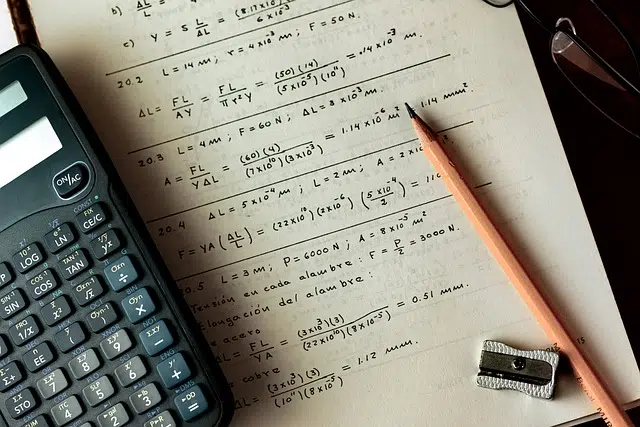
A polynomial is an algebraic expression composed of the union of two or more variables and constants that are linked through addition, subtraction or multiplication operations.
Algebraic expressions that are formed from the union of two or more variables and constants , linked through multiplication, subtraction or addition operations, are called polynomials . The adjective polynomial, for its part, applies to the quantity or operations that can be expressed as polynomials.
Thanks to polynomials, it is possible to develop different calculations and get closer to a differentiable function. Many sciences use polynomials in their studies and research, from chemistry and physics to economics.
Operations with polynomials
To add or subtract polynomials, it is necessary to group the different monomials and simplify those that are similar. Multiplication , for its part, is developed by multiplying the terms of one polynomial by the terms of the other, finally simplifying the monomials that are similar.
It is important to note that polynomials are not infinite , that is, they cannot be formed by an infinite number of terms. On the other hand, division is an operation that is never part of polynomials.
One property of polynomials is that, when you add, subtract or multiply them, the result will always be another polynomial. When the polynomial has two terms, it is called a binomial . If it has three terms, on the other hand, it is called a trinomial .
Another relevant concept when working with polynomials is the notion of degree . The degree of the monomial is the largest exponent of its variable : the degree of the polynomial , therefore, will be the degree of its monomial that has the highest value.

Polynomials allow the development of different calculations.
A theorem postulated by Taylor
A theorem stated in the first decade of the 18th century by the mathematician Brook Taylor, originally from Great Britain, is known as the Taylor polynomial , but discovered at the end of the previous century by a Scottish mathematician and astronomer named James Gregory. Thanks to its use in the study of a function, it is possible to find polynomial approximations in an environment in which it can be differentiated, in addition to taking advantage of this estimate to limit errors.
The type of environment used for the application of the Taylor polynomial is reduced , which means that a series of points are taken into account around a main one, so that a certain margin can be had but that it is not excessive. The coefficients of the polynomial are dependent on the derivatives of the function (measurement of the speed with which a value changes when its dependent variable is modified) at that point.
The polynomial interpolation method
The method called polynomial interpolation , for its part, serves to approximate the values that a given function takes, of which we simply know its image in a finite amount of abscissa (Cartesian coordinates). Generally, only the values it takes for the abscissa are available (in other words, the expression of the function is unknown).
Through this method we aim to find a polynomial that also brings us closer to other values that are not known with a particular level of precision, for which there is the interpolation error formula , which is used to adjust the precision.
Other important concepts
The term primitive polynomial responds to two concepts: a polynomial of an algebraic structure (called single factorization domain ) in which all its elements can only be decomposed as a product of prime elements, so that its coefficients have 1 as their greatest common divisor; for an extension of bodies, the minimum polynomial of one of its primitive elements.
This leads us to the concept of minimum polynomial which, in mathematics , refers to the normalized polynomial (whose main coefficient is 1) of the lowest degree so that its result is 0.
